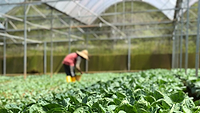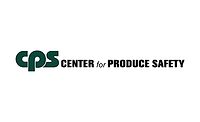Latest Research Findings Hit On Produce Safety Priorities

Because it provides inherently healthy, nutritious foods, the fresh produce industry is uniquely positioned to help solve the nation’s obesity epidemic. To do so, consumers must have confidence in the safety of the fresh fruits, vegetables, and nuts they eat and feed their families.
Following a large and deadly outbreak of foodborne illness linked to fresh spinach in 2006, the U.S. produce industry couldn’t wait for government or other direction. After finding significant knowledge gaps and a lack of data needed to build risk- and science-based produce safety programs, the industry created the Center for Produce Safety (CPS) in 2007.
CPS works to identify produce safety hazards, then funds research that develops that data as well as potential science-based solutions that the produce supply chain can use to manage those hazards. While two foodborne illness outbreaks in the first half of 2018 associated with leafy greens demonstrate the industry still has challenges to meet, CPS has grown into a unique public-private partnership that moves most of the research it funds from concept to real-world answers in about a year.
Each June, CPS hosts a symposium to report its latest research results to industry, policy makers, regulators, academia, and other produce safety stakeholders. Key learnings from the 2017 symposium have just been released on topics including water quality, cross-contamination, and prevention. A few highlights from those key learnings are summarized here, and for the full details, you can download the Key Learnings report from CPS’s website.
Know Your Water
Irrigation water is a potentially significant contamination hazard for fresh produce while it is still in the field. While CPS research has revealed many learnings about agricultural water safety in its 10 years, many questions still remain. Meanwhile, the U.S. Food and Drug Administration (FDA)’s proposed Food Safety Modernization Act (FSMA) water testing requirements—which offers some challenges for producers in specific production regions—recently raised even more questions.
New CPS research illustrates the risks of irrigating with “tail water” from runoff collection ponds. With water becoming a precious resource in drought-stricken areas, the objective was to learn if tail water might be recovered and used for irrigation. We learned that differences among pond sites—for example, water sources, climate, ag management practices—can strongly influence the chemistry and microbiology of the water. Further, water pH can influence disinfection treatment strategies.[1]
CPS research continues to investigate tools for irrigation water testing, looking specifically at sample volumes,[2] and searching for better water quality indicators and indexing organisms including harnessing next-generation DNA sequencing.[3] Following a CPS-organized colloquium on ag water testing in late 2017, FDA subsequently announced it would revisit FSMA’s ag water requirements, and postponed compliance.
Bottom line, CPS research demonstrates that growers must thoroughly understand their irrigation water before they can accurately assess cross-contamination risk. CPS’s findings clearly point to the need to take a systems approach, to understand and control the entire water system to help achieve produce safety. Long term, this may mean prioritizing research into ag water disinfection systems to better manage contamination hazards that can also operate at rates needed for field production.
Cross-Contamination Can Happen across the Supply Chain
While conceptually and anecdotally the fresh produce industry knows that food safety is a supply chain responsibility, research is needed that documents the role of the entire supply chain to keep fresh produce clean and safe from field to fork. At the 2017 CPS Research Symposium, research reports were presented focusing on cross-contamination risks from the packinghouse to retail store display.
In the packinghouse, CPS-funded research found that wash systems can effectively control cross-contamination on fruit, when proper system practices are implemented.[4] Post-wash, CPS research involving fresh-cut mangos also demonstrated that maintaining the cold chain is critical to controlling pathogen populations.[5] Across the cantaloupe supply chain, CPS studies show food contact surfaces—for example, foam padding—are potential points of cross-contamination.[6] See the full 2017 Key Learnings report for details, as these brief descriptions only scratch the surface of this research.
CPS studies clearly demonstrate that food safety is a supply chain responsibility—a message that must be internalized from growers and packers to transporters, storages, and retailers to commercial, institutional, and home kitchens. While translating this research into reality will present engineering and operational challenges, our new understanding of produce safety demands it.
Verifying Preventive Controls
The produce industry must know that its preventive controls are in fact effective. That said, validation can be tricky. If validation research doesn’t mimic the real world, industry ends up fooling itself about whether its food safety processes work—and the human consequences are real.
Numerous scientists presented research at the 2017 CPS Research Symposium that validates various preventive controls, from heat treating poultry litter[7] to pasteurizing pistachios[8] to validating chlorine levels in wash water systems.[9] Some researchers effectively used nonpathogenic bacteria as a surrogate in their validation studies, while another is working to develop an avirulent salmonella surrogate, and another. Wang used actual Escherichia coli O157:H7 (albeit in a laboratory).
Importantly, CPS research finds that the physiological state of a pathogen or surrogate, and pathogen growth conditions themselves, are critically important to validation studies.[10] Meanwhile, suitable surrogates have been identified for some applications, the search continues for many others.
The research findings described here are just some of the real world-applicable results to emerge from CPS’s research program. To learn more, download the 2017 and other annual Key Learnings reports from the CPS website > Resources > Key Learnings page at www.centerforproducesafety.org.
Bob Whitaker, Ph.D., is chief science and technology officer for Produce Marketing Association (PMA), the fresh produce industry’s largest global trade association. PMA helped found CPS, and Whitaker is a member of CPS’s Board of Directors.
References
1. www.centerforproducesafety.org/researchproject/389/awards/Microbial_food_
safety_risks_of_reusing_tail_water_for_leafy_green_production.html.
2. www.centerforproducesafety.org/researchproject/378/awards/Improved_
sampling_and_analytical_methods_for_testing_agricultural_water_
for_pathogens_surrogates_and_source_tracking_indicators.html.
3. www.centerforproducesafety.org/researchproject/388/awards/Identification_of_novel_
indicator_organisms_to_determine_the_risks_of_fecal_contamination_of_irrigation_waters.html.
4. www.centerforproducesafety.org/researchproject/375/awards/Impact_of_wash_
water_disinfectants_on_Salmonella_enterica_transfer_and_survival_in_mango_packing_
facility_water_tank_operations.html.
5. www.centerforproducesafety.org/researchproject/390/awards/Factors_that_influence_
the_introduction_fate_and_mitigation_of_foodborne_
pathogens_on_mangoes_throughout_the_production_chain.html.
6. www.centerforproducesafety.org/researchproject/397/awards/Control_of_
CrossContamination_during_Fieldpack_and_Retail_Handling_of_Cantaloupe.html.
7. www.centerforproducesafety.org/researchproject/392/awards/Validating_a_physically_
heattreated_process_for_poultry_litter_in_industry_settings_using_the_avirulent_Salmonella_
surrogates_or_indicator_microorganisms.html.
8. www.centerforproducesafety.org/researchproject/380/awards/Improving_pasteurization_
validation_methods_for_pistachio_processing.html.
9. www.centerforproducesafety.org/researchproject/387/awards/Validation_of_chlorine_
level_in_sanitization_system_to_avoid_crosscontamination.html.
10. www.centerforproducesafety.org/researchproject/399/awards/Pathogen_physiological_state_
has_a_greater_effect_on_outcomes_of_challenge_and_validation_studies_than_strain_diversity.html.
Looking for a reprint of this article?
From high-res PDFs to custom plaques, order your copy today!









